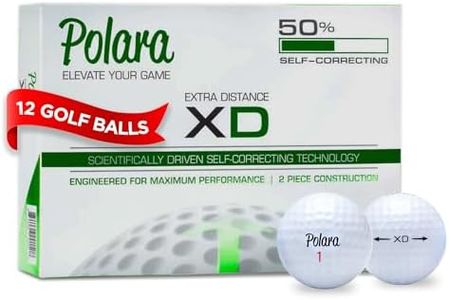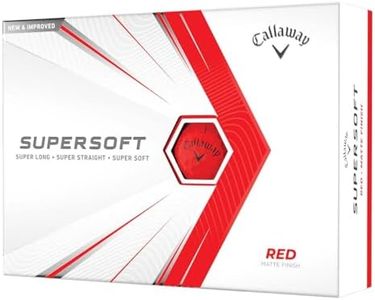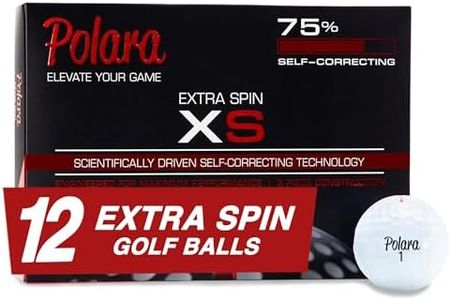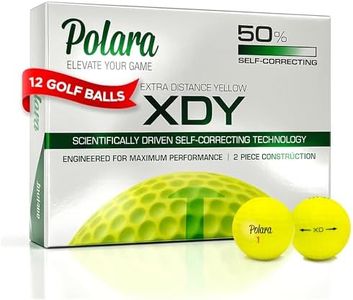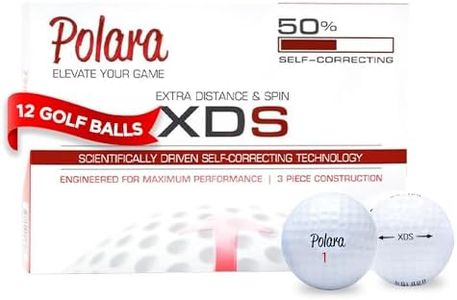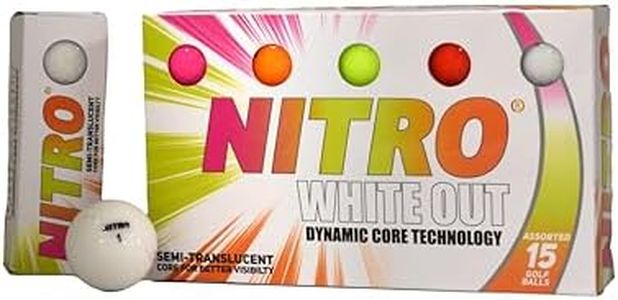We Use CookiesWe use cookies to enhance the security, performance,
functionality and for analytical and promotional activities. By continuing to browse this site you
are agreeing to our privacy policy
7 Best Non Conforming Golf Balls
From leading brands and best sellers available on the web.By clicking on a link to a third party's website, log data is shared with that third party.
Buying Guide for the Best Non Conforming Golf Balls
Choosing non-conforming golf balls can be an exciting way to push the boundaries of your golf game and have a bit of extra fun during practice or friendly rounds. These balls are designed outside official tournament rules, which means you’re often getting added distance, unique flight patterns, or specialty materials not found in standard balls. When shopping, it’s important to match the ball’s features to your personal goals—whether you’re looking for distance, spin, or unique playability. Understanding the key specifications will help you find a golf ball that suits your swing speed, style, and what you find enjoyable or challenging on the course.Compression RatingCompression rating measures how much the ball deforms when hit, influencing both feel and distance. Higher compression balls are firmer and generally require faster swing speeds to compress fully, making them best for strong, experienced players. Lower compression balls are softer and more suited to slower swing speeds, offering more distance with less effort. To choose the right compression for you, think about your swing speed: slower swingers should look for balls with lower compression, while faster swingers can opt for higher compression for more control.
Cover MaterialThe cover is the outermost layer of the ball and can be made from materials like Surlyn, urethane, or other experimental blends in non-conforming balls. Surlyn covers are generally more durable and provide less spin, leading to straighter shots and more durability. Urethane covers, though softer and more prone to scuffing, allow for greater spin and control around the greens. Some non-conforming balls use unique materials aimed at maximizing distance or altering how the ball reacts on impact. If you’re seeking durability for practice, go with harder covers. If you want more greenside control, consider softer covers.
Dimple PatternDimples affect the ball’s aerodynamics, influencing lift, drag, and overall flight. Non-conforming balls might have unusual dimple designs to achieve extraordinary distance or different flight paths. Fewer, larger dimples can produce a higher flight and potentially more carry, while more, smaller dimples may offer a more stable, piercing flight. Consider what you want the ball to do: if you’re going for sheer distance and height, look for balls advertised with unique or reduced dimple counts. If you prefer a more controlled, consistent flight, seek designs that mimic standard patterns.
Core CompositionThe core is what drives energy transfer in the ball and affects distance and feel. Softer cores generally compress more at impact, offering a softer feel and aiding those with slower swings. Harder or oversized cores, frequently found in non-conforming models, will often deliver more distance but can feel firmer on contact. Match the core to your desired feel and the distance you want—in general, softer if you’re prioritizing feel, harder if you’re chasing extra yards.
Legal Status / Rule ComplianceNon-conforming golf balls are not approved for official tournaments, but their legality for recreational rounds varies by club or course. It's important to know your playing intentions—if you’re only using the ball for personal amusement or practice, there are virtually no limits. But if you’ll be playing in any formal events or club rounds, double-check the permissible equipment list to avoid confusion or disqualification.

